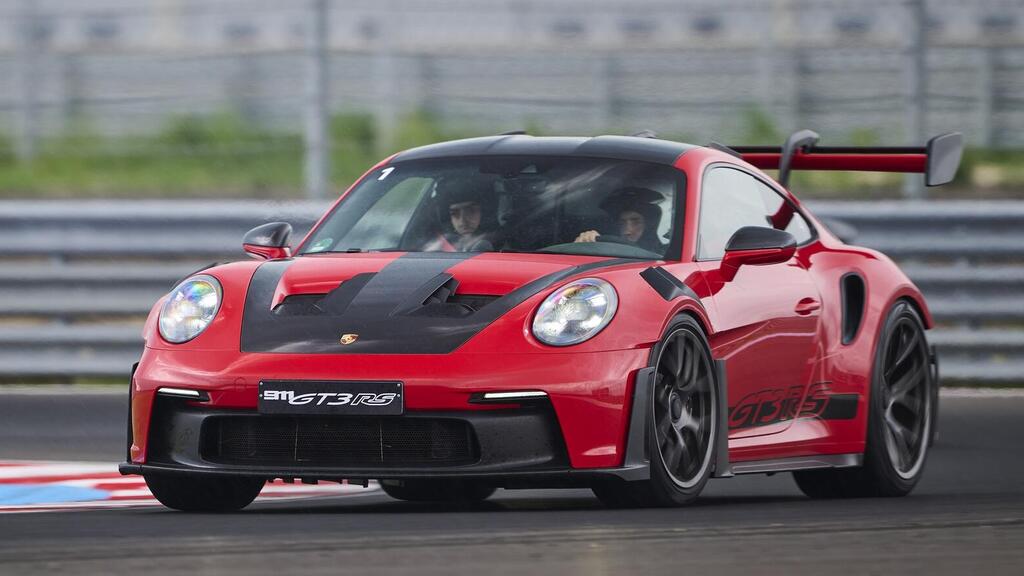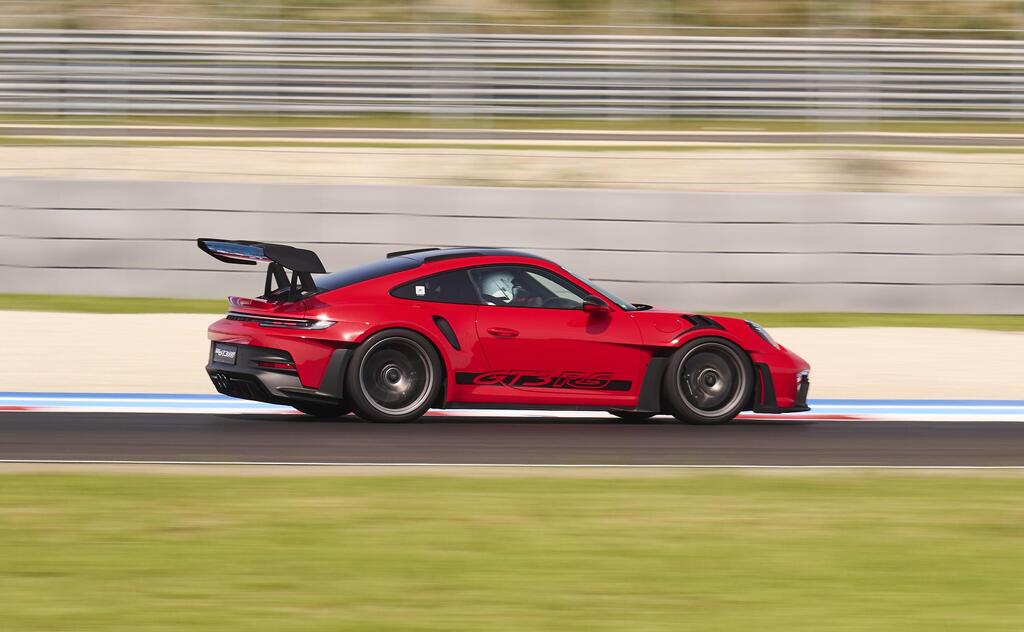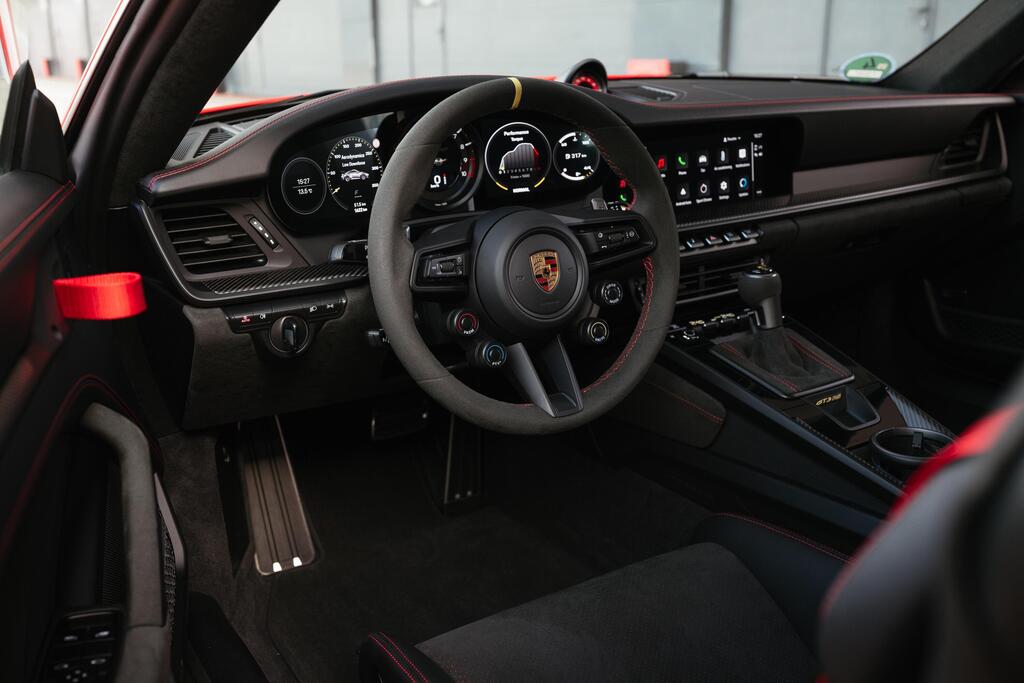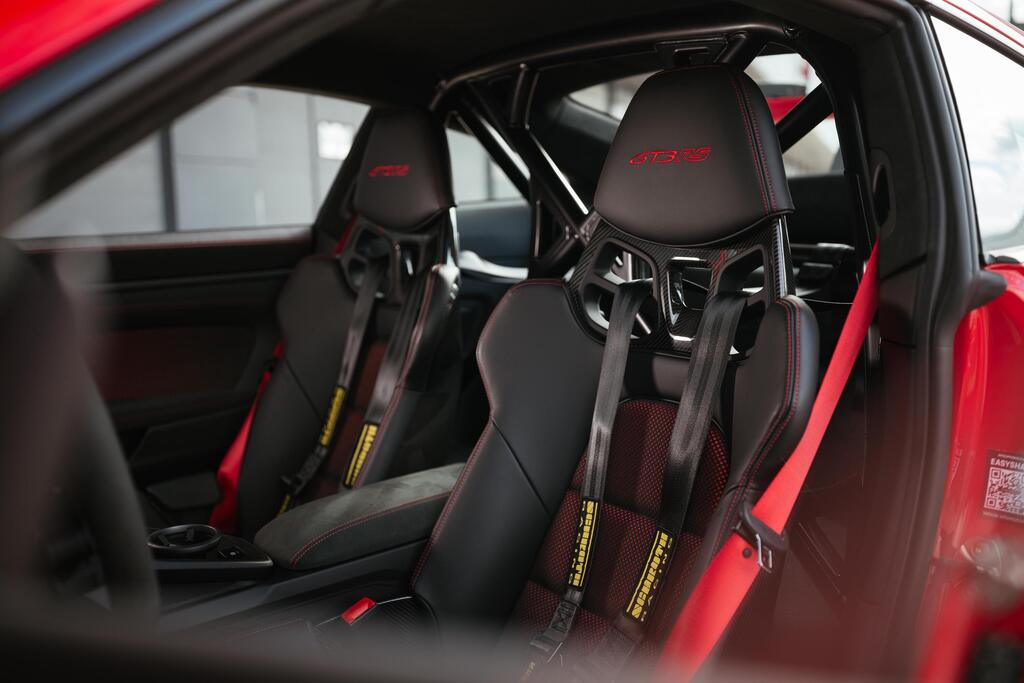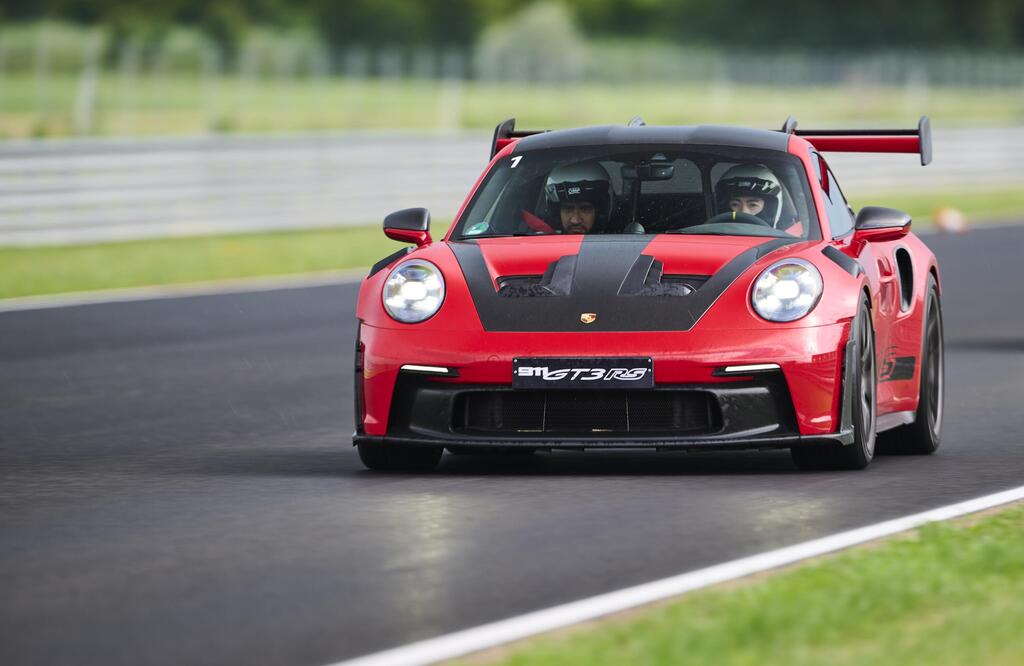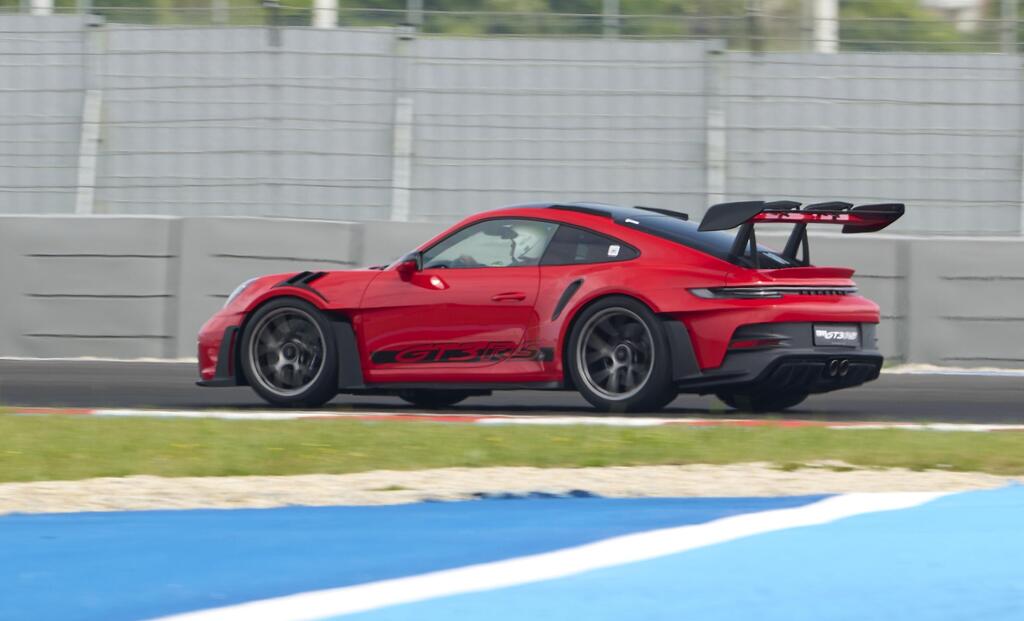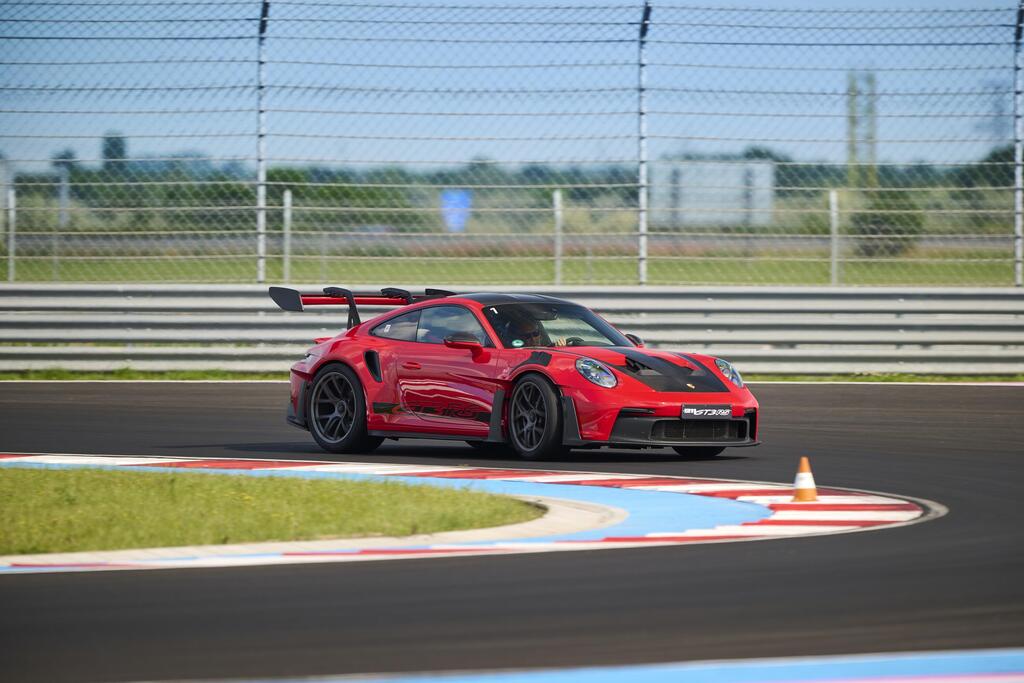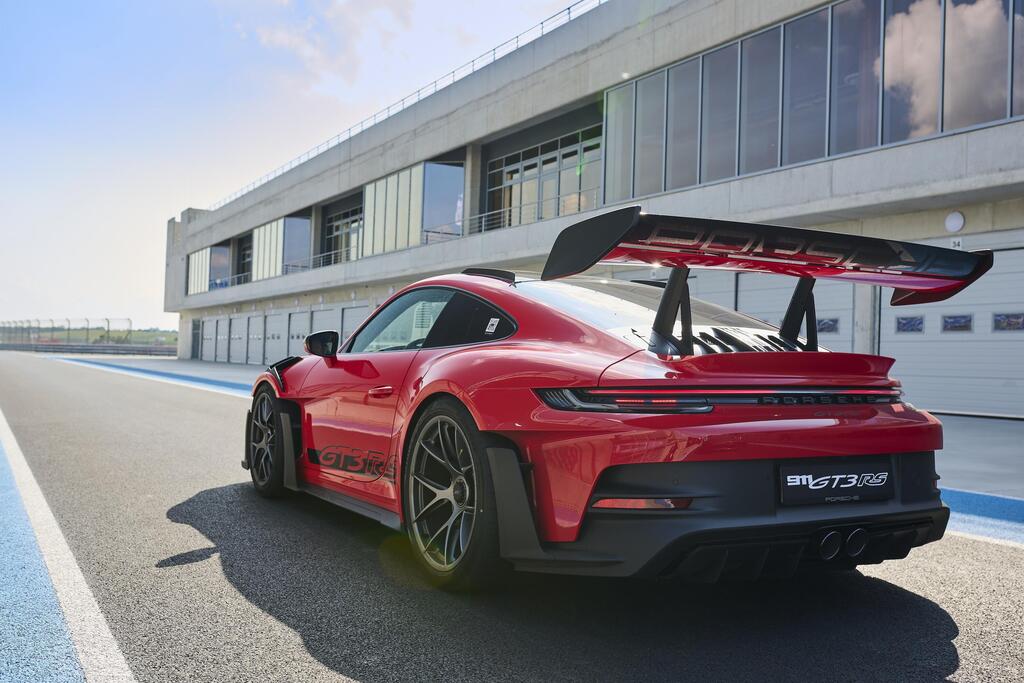What we drove: Porsche 911 GT3 RS
Competitor: Lamborghini Huracán STO
Price: NIS 2.1 million (approximately $550,000 USD)
Pros: A pure track machine, possibly the fastest in the world
Cons: We don't have NIS 2.1 million
In the diverse range of Porsche 911 versions, the GT3 is not only considered the pinnacle but also the closest thing to a purpose-built track car that's also street-legal. The formula: less weight, more power and, importantly, heavy investment in suspension systems and aerodynamics inspired by combat aircraft.
Read more:
But for some people, that's just not good enough. It's not fast or extreme enough, which is why Porsche also offers the GT3 RS, elevating all that goodness to "extreme" status. It's a car you can drive on public roads anywhere in the world, but at any moment it's as if it's asking you, "When are we getting to the track already?"
And that's precisely where we are driving this beast right now: at Balaton Park in Hungary, about 100 km southwest of the capital, Budapest. To make the event sufficiently important and respectable for us, we've been informed that we are the first to drive it, even before the official opening.
This is the first new track in Europe in a decade and a half, constructed to the highest FIA standards so that in the future it could also host the prestigious Formula 1 races. The track is 4.1 km long with 16 turns, including some that require speeds over 200 km/h and technical sections that challenge the driver's weight-transfer techniques.
The asphalt is brand new, the freshest we've ever had the opportunity to drive on. It's completely devoid of any braking markers that would allow us to gauge braking points, and without any skid marks left by those who couldn't manage it.
Aesthetically speaking: Before we dive into the track performance, let's talk about the car's appearance. This machine looks much closer to a pure race car than a regular 911, with an array of vents and aerodynamic features at every corner. Nearly all are designed to be functional for maximizing aerodynamics. The ones that aren't functional have a "no vent" label on them. The reason for this is that Andreas Preuninger, the head of the GT model division at Porsche, despises the industry's trend of faux aerodynamic features.
While we won't detail the function of every vent or aerodynamic feature, we will discuss their purpose. Their aim is to make use of the air flowing around the car's body to improve grip, with a downforce of 409 kg at 200 km/h and 860 kg at 285 km/h. That's three times the downforce of a standard GT3, making it the industry's highest downforce production car—comparable to specialized race cars. This amount of downforce should allow the car to stick to the asphalt, especially as the speed increases.
The massive rear wing, positioned even higher than the roof itself, is impossible to ignore. And not just because of its size. It features a variable attack angle that can be adjusted automatically or manually via a DRS (Drag Reduction System) switch on the steering wheel, much like in race cars. This allows for a choice between maximizing downforce and minimizing drag.
The wing also acts as an automatic air brake during hard braking, helping to reduce the stopping distance from 200 km/h by 2.5 meters. It's worth noting that many parts of the car are made of carbon, including the front hood, doors, roof and front wings, to keep the curb weight low. It's only 15 kg heavier than a regular GT3, weighing in at 1,450 kg.
The driver's cabin is familiar from the GT3, with bucket seats and professional-grade safety belts similar to those in a race car, a roll cage, fabric strap door handles and a true gear selector in place of the familiar switch found in other 911 versions. This allows for manual shifting if you're not a fan of the paddle shifters behind the steering wheel.
On the steering wheel itself, there are four control dials for various mechanical and electronic systems—nine damping settings and nine rebound settings for the rear and front shock absorbers separately, the level of traction control intervention (seven settings) and the character of the limited-slip differential during deceleration into a corner and acceleration out of it (nine settings for each).
We didn't really have the time needed to explore the extensive tuning possibilities here, but this is undoubtedly a track driver's dream. It also allows the driver to adjust driving characteristics according to their driving style or the track without the need to lift the car onto a lift.
Sky's the limit: Like all its predecessors, this car also has a naturally aspirated engine, without the aid of a turbocharger that other 911 versions use. It still has the familiar 4.0-liter six-cylinder boxer engine from the GT3 but with changes in its internal components (camshaft, valves, and connecting rods), it outputs 525 horsepower, which is 15 hp more than the standard GT3.
The power is sent to the rear wheels through a seven-speed dual-clutch gearbox, which has a shorter final drive ratio compared to the GT3. As a result, the car can sprint from 0 to 100 km/h in 3.2 seconds and reach 200 km/h in 10.6 seconds, shaving off 0.2 seconds in both instances compared to the GT3. However, due to its higher drag coefficient, the top speed is 22 km/h lower, capping off at 296 km/h.
While the performance is indeed impressive, it doesn't have the F-18 fighter jet launch sensation you'd get from a Turbo S, for example. What it does offer in spades is character—a naturally aspirated engine that we'll likely yearn for more than any other in a future where high-octane gasoline engines are no longer feasible. It provides a level of power delivery that no turbocharger can match, requiring the driver to maintain high RPMs at all times.
We naturally prefer a traditional manual gearbox, but there's no doubt that this is the best dual-clutch system available today. Even Porsche's excellent test drivers can't perform manual gear shifts as quickly and accurately as this system does.
The icing on the cake is the sound that the engine produces. Starting from the unique growl of a cold morning start and creeping out of the garage to the launch point, all the way to the ability to climb to 9,000 RPM with a sound that's simply a mechanical symphony of pistons and valves. It's an auditory experience that stays with you long after the drive, much like an unforgettable song you find yourself humming after a live performance.
Against the clock: The RS's suspension setup is structurally similar to the GT3 (double-wishbone in the front, multi-link at the rear), but it has different geometry to minimize nose dive during hard braking. The track width has been widened by 2.9 cm and the active rear-steering system has been tuned more aggressively.
To support the significantly higher downforce and generate better grip, the tires are 2 cm wider than those on the GT3—275/35 in the front and 335/30 at the rear—mounted on 20-inch front and 21-inch rear forged aluminum wheels, featuring a central locking mechanism, as is customary in race cars.
The result of all these upgrades is a car that is much, much faster than 99.9% of the customers who will buy it, even if they hold an FIA racing license. Speed is the story here, but not just in a straight line.
The real story is the speed that can be achieved entering, navigating through, and exiting a corner. It demands the driver to rely on the car's aerodynamics, which significantly enhance the already high grip levels offered by the mechanical systems (tires, suspension, and chassis).
When pushed to the limits of the G-forces it can exert on the driver's body, it's the closest thing to a real race car. So much so that it makes the Turbo S, which I drove just before, feel as bloated as a double-decker bus.
The sensations in this car are incredibly intense, with super-sharp responses to every driver input and tons of feedback channeled to every part of your body. The test car has optional ceramic brakes, measuring 390-410 mm front and rear. Surprisingly, these are not standard equipment but rather a costly option (around 95,000 shekels), which is entirely worth ticking off on the checklist. The durability of these brakes is among the most impressive I've encountered on a road-legal car.
Checkered flag: Many car manufacturers boast about bringing track technology to the public road, but often this is just a marketing slogan not entirely rooted in reality. That's not the case here; this GT3 RS is literally a track car adapted for road use.
Porsche's engineers, especially those in the GT department, have performed magic here. Time and again, they've surpassed the already high standards of the outgoing model. This time, the improvement on the track is dramatically more significant than in any of the previous generations.
The future of the 911 in general, and the GT3 RS in particular, is uncertain. It's not yet clear how long Porsche will be able to maintain this winning formula of pure gasoline power at sky-high RPMs without the burden of heavy batteries. If this GT3 RS is indeed remembered as the last of its kind, it's likely the best farewell gift Porsche could have given itself.
Engine: 4.0-liter 6-cylinder boxer, gasoline
Power: 525 hp at 8,500 RPM
Torque: 47.4 kg-m (465 Nm) at 6,300 RPM
Transmission: 7-speed dual-clutch, rear-wheel drive
Length: 457.2 cm
Width: 190 cm
Height: 132.2 cm
Wheelbase: 245.7 cm
Curb weight: 1,450 kg
Cargo capacity: None
0-100 km/h acceleration, top speed: 3.2 seconds, 296 km/h
Fuel economy, emissions: 7.4 km per liter, 305 grams of CO2 per km
Airbags: 6
Euro NCAP safety rating: Not Tested
Price: NIS 2.1 million
The writer was a guest of Porsche.


